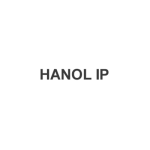In Korea, unlike for patents, utility models and designs, in the case of trademark infringement, the Supreme Court had ruled that use of a registered trademark which is identical or similar to an earlier trademark, does not constitute infringement of the right of the earlier trademark until a trial decision to invalidate the registration of the later-registered trademark becomes final and conclusive. This was because such use should be considered as “exercising the right holder’s own trademark”, and thus constitutes legitimate use of the registered trademark (Supreme Court Decisions 86Do277, July 8 1986, and 98Da54434, 98Da54441, February 23 1999).
Recently, the Supreme Court ruled in an en banc decision that the use of a later-registered trademark which is similar to an earlier trademark does constitute infringement of the right of the earlier trademark. In this decision, the Supreme Court has changed the precedents, taking a different view for such cases (Supreme Court Decision 2018Da253444, March 18 2021).
In this case, the plaintiff is a trademark owner who registered a trademark for ‘DATA FACTORY and Device’ (earlier trademark), and the defendant used trademarks such as ‘DATA FACTORY’, ‘DATA FACTORY in Korean’, ‘DATA FACTORY in Korean and Device’ (defendant's marks in actual use). The plaintiff filed a trademark infringement suit against the defendant’s use of the similar marks. During the litigation, the defendant applied for the trademark ‘DATA FACTORY in Korean and Device’, one of the marks in actual use, at the Korean Intellectual Property Office (KIPO). The defendant’s application for such a mark was registered during the first instance (later-registered trademark).
In the litigation, the defendant argued that (i) the defendant's marks in actual use were not similar to the plaintiff's earlier trademark in terms of marks and the services provided; and (ii) at least after the date of registration for its own trademark, the use of a later-registered trademark corresponds to legitimate use, and thus does not constitute infringement.
The key issue in this case was whether the use of the later-registered trademark does not constitute infringement, since it is “exercising the right holder’s own trademark”.
In this case, the courts of the first instance, second instance (original decision) (Seoul Central District Court Decision 2016Gahap534299, August 10 2017, Patent Court Decision 2017Na2158, June 21 2018, respectively), and final instance (the subject decision) all ruled admitting the defendant’s infringement.
In the decision, the court ruled that if the defendant applied for and registered its own trademark after the registration of the earlier trademark, the exclusive right of the later-registered trademark shall be limited in relation to the earlier trademark. Therefore, without a final and conclusive trial decision to invalidate the registration of the later-registered trademark, the defendant’s use of the later-registered trademark, which is identical or similar to the earlier-registered trademark, without the consent of the registrant of the earlier trademark, shall be deemed as trademark infringement.
In this ruling, the court applied the principles prioritising the right that was established earlier in chronological order. In particular, the court stated that the first-to-file rule is a general principle applied to the Trademark Act, as well as to the other IP laws such as the Patent Act, Utility Model Act, and Design Protection Act, and thus, this rule is applied to the conflicting rights between the registered trademarks. Specifically, the Korean Trademark Act explicitly stipulates the first-to-file rule (Article 35), and thus, it is a ground for rejection and invalidation when an application or registration is in violation of this rule (Article 34(1)vii and Article 117(1)i of the Trademark Act). Furthermore, where a trademark right holder or its authorised licensee uses the registered trademark, if this use is in conflict with another person’s right, such as a patent, utility model right, design right, or copyright, which was established prior to the date of filing of the trademark, it requires the consent of the earlier right holders (Article 92 of the Trademark Act).
In the supplemental reasoning of this decision, the justices of the Supreme Court additionally reviewed the provisions of the Patent Act, Utility Model Act, and Design Protection Act corresponding to those of the Trademark Act indicated above, and confirmed that the above principle applied to this decision, namely, the principle prioritising the earlier established right is also applied to other IP laws, and is not inconsistent with the general principle of these laws.
As such, since the first-to-file rule and the principle prioritising the earlier established right are the general principle of all regulations of IP rights, such a principle shall be applied to trademark infringement cases concerning the conflicting registered rights in trademarks. Therefore, the Supreme Court ruled that the previous decisions, having taken a different view from that in this case, shall be changed to the extent contrary to the view of the subject decision.
According to the subject decision and the principles clarified in this ruling, the general principle consistent with the purpose and the provisions stipulated in the Trademark Act would be applied to trademark infringement cases involving conflicting registered marks. Therefore, as with the cases of patents and other IP rights, it is expected that a unified resolution of such trademark cases can be expected as well as for cases in other IP laws.
In particular, in trademark cases, the prior right holder can claim infringement even before the trademark right of the later-registered trademark is extinguished through an invalidation trial, enabling prompt relief from infringement. On the other hand, it should be noted that from the standpoint of a person who has registered a later-registered trademark, the use of his or her registered trademark may be recognised as infringement of the right of the earlier trademark without the procedure for determining invalidity of the later-registered trademark.

Min Son, PhD
Partner, Hanol IP & Law












